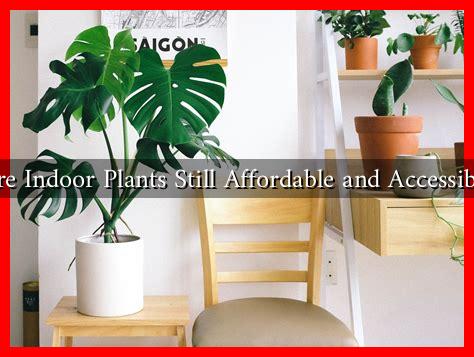-
Table of Contents
Are Indoor Plants Still Affordable and Accessible?
Indoor plants have surged in popularity over the past decade, transforming homes and offices into green sanctuaries. However, as the demand for these botanical companions grows, so does the question: Are indoor plants still affordable and accessible? This article delves into the current state of the indoor plant market, exploring pricing trends, accessibility, and the factors influencing these dynamics.
The Rise of Indoor Plants
Indoor plants have become more than just decorative items; they are now recognized for their numerous health benefits, including improved air quality, reduced stress levels, and enhanced productivity. According to a study by the University of Queensland, having plants in the workplace can increase productivity by up to 15%. This growing awareness has led to a significant increase in demand.
Current Pricing Trends
As the popularity of indoor plants has surged, so too have their prices. However, the affordability of these plants varies widely based on several factors:
- Type of Plant: Common houseplants like pothos, snake plants, and spider plants are generally affordable, often ranging from $5 to $30. In contrast, rare or exotic plants, such as the Monstera Albo or variegated philodendrons, can cost hundreds or even thousands of dollars.
- Size: Larger plants typically come with a higher price tag. A small succulent may cost just a few dollars, while a mature fiddle leaf fig can set you back $100 or more.
- Location: Prices can vary significantly based on geographic location. Urban areas with a high demand for indoor plants may see inflated prices compared to rural regions.
According to a report by the American Society of Horticultural Science, the indoor plant market is expected to grow by 10% annually, indicating a robust demand that could influence prices further.
Accessibility of Indoor Plants
While many indoor plants are still affordable, accessibility can be a challenge for some individuals. Here are a few factors that impact accessibility:
- Local Availability: Not all regions have access to specialized plant nurseries or garden centers. In some areas, consumers may rely on big-box stores, which may not offer a wide variety of plants.
- Online Shopping: The rise of e-commerce has made it easier to access a broader range of plants. Websites like Etsy and Amazon offer a plethora of options, but shipping costs can add to the overall price.
- Community Initiatives: Many communities have started plant swaps or local gardening clubs, making it easier for individuals to acquire plants without spending much money.
Case Studies: Affordability in Different Markets
To better understand the affordability and accessibility of indoor plants, let’s look at a few case studies from different markets:
- Urban Centers: In cities like New York and Los Angeles, the demand for trendy plants has led to higher prices. However, local plant shops often offer discounts or loyalty programs to make plants more accessible.
- Suburban Areas: In suburban regions, larger garden centers often provide a wide variety of affordable plants, making it easier for families to start their indoor gardens.
- Online Marketplaces: A study by the National Gardening Association found that online plant sales have increased by 50% since 2020, indicating that consumers are willing to pay for convenience, even if it means higher prices.
Conclusion
In conclusion, while indoor plants remain affordable for many, the accessibility of specific varieties can vary based on location, type, and market trends. The rise of e-commerce has made it easier for consumers to find plants, but prices can fluctuate based on demand and rarity. As the indoor plant market continues to grow, it is essential for consumers to explore local options, participate in community initiatives, and consider online resources to find the best deals. Ultimately, the joy and benefits of indoor plants can still be within reach for those willing to seek them out.

